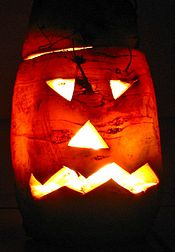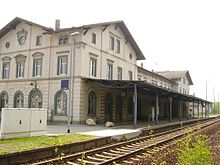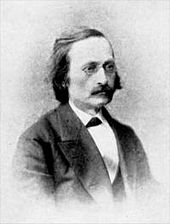Oderwitz
| coat of arms | Germany map | |
|---|---|---|
|
Coordinates: 50 ° 58 ' N , 14 ° 43' E |
|
| Basic data | ||
| State : | Saxony | |
| County : | Goerlitz | |
| Height : | 300 m above sea level NHN | |
| Area : | 35.91 km 2 | |
| Residents: | 5002 (Dec. 31, 2019) | |
| Population density : | 139 inhabitants per km 2 | |
| Postal code : | 02791 | |
| Area code : | 035842 | |
| License plate : | GR, LÖB, NOL, NY, WSW, ZI | |
| Community key : | 14 6 26 390 | |
| Community structure: | 2 districts | |
| Address of the municipal administration: |
Strasse der Republik 54 02791 Oderwitz |
|
| Website : | ||
| Mayor : | Cornelius Stempel (independent) | |
| Location of the municipality of Oderwitz in the district of Görlitz | ||
Oderwitz ( Upper Sorbian Wódrjeńca , Upper Lusatian : Uderwitz ) is a Saxon municipality in the district of Görlitz in Upper Lusatia . It is located in the southeast of the Free State of Saxony , not far from the borders with the Czech Republic and Poland . The community was created in 1999 through the merger of the places Oberoderwitz and Niederoderwitz, which form its districts. In the historical tripartite division of the place one also differentiated Mitteloderwitz. With around 5300 inhabitants, Oderwitz is one of the larger non-urban communities in the district.
Oderwitz goes back to a Slavic settlement called Wudrijecz and was first mentioned in a document in 1324 as Odrowitz . Until the 18th century the community was characterized by agriculture and the manorial separation into seven parts. In the 19th century the place developed into an industrial community with many weaving mills. From 1960 the community experienced its economic heyday, large quantities of damask goods were produced and exported. After reunification , Oderwitz lost its importance as a textile center.
In more recent times the place has become known as a windmill and weather village thanks to its three post windmills and the meteorology center “Zittauer Gebirge” . Another tourist destination is the summer toboggan run on the slope of the Oderwitz Spitzberg.
geography
Geographical location and extent
The municipality of Oderwitz is located in the southern part of the district of Görlitz, about nine kilometers northwest of Zittau and fifteen kilometers south of Löbau in the Oberlausitzer Bergland , the foreland of the Zittau Mountains . The place extends over a length of nine kilometers and follows the course of the river Landwasser . Numerous small streams and rivulets run through the Oderwitz corridor. The original forest has almost completely disappeared due to the creation of arable and settlement areas, only the royal wood in the east remained as a larger contiguous forest area.
The Oderwitzer Tal lies at an altitude of about 300 meters, with the Oberoderwitz district being slightly higher than Niederoderwitz. At 510 meters above sea level, the highest point in the municipality is the Oberoderwitzer Spitzberg mountain to the west , which is one of the most striking elevations in the surrounding area. Other important elevations are the Stumpfeberg in the west, the Hutberg and the Sonnenhübel in the east. Oderwitz lies on the bottom of the Oderwitz Basin .
Local division
Oderwitz originally consisted of the two localities Ober- and Niederoderwitz, which were made up of several parts due to the manorial separation. In the 19th century there were still the Ruppersdorfer, the Hainewalder and the Zittauer parts in Oberoderwitz, the Hainewalder, the Zittauer and the Zieglers part in Niederoderwitz, and Mitteloderwitz, which was part of Niederoderwitz until 1839. In 1910 Mitteloderwitz was incorporated back into Niederoderwitz.
After the merger of Oberoderwitz and Niederoderwitz on January 1, 1999, there is only one municipality Oderwitz, the two former municipalities are districts. Many names of the old farms are known from the history of the place, but they have no administrative significance. Such goods include Lesser Poland , Viehbig and Rothes Good in Oberoderwitz, Kreischerhof and Three houses in Central Oderwitz and Neufelden , cattle path houses and Landsberg houses in Niederoderwitz.
The last statistical data at the level of the municipal parts were collected on December 31, 1998:
| former key |
District | Area km² |
Residents |
|---|---|---|---|
| 14286290 | Niederoderwitz | 19.25 | 3457 |
| 14286310 | Oberoderwitz | 16.68 | 2870 |
| Oderwitz community | 35.93 | 6327 |
Neighboring communities
Five municipalities border the municipality of Oderwitz. These are Kottmar in the north-west, Herrnhut in the north, Mittelherwigsdorf in the east and south-east, Hainewalde in the south and Leutersdorf in the south-west.
geology
During the volcanic activities in the transition from the old to the young tertiary , viscous lava was repeatedly pressed to the surface of the earth. This largely solidified to phonolite , but also to basalt and nepheline basanite . The latter occurs mainly in the north of Oderwitz, on the lower reaches of the country the water, and the hat - and Pferdeberg to light. The phonolite, on the other hand, forms the main part of the mountain range in this area in addition to the peaks of Spitzberg and Sonnenhübel.
In the Pleistocene , mainly dry gravels and sands were deposited along the land water and its tributaries , which were covered by a layer of loess loam and sandy clays . This cover layer is quite thick in the west of Oderwitz, whereas sandy soils are predominant in the east. This can be seen in several sand and gravel pits east of the village. The most fertile soils are around Mitteloderwitz and Spitzberg; they were created by the weathering of the phonolite rock. Nevertheless, the soil in the hilly area around Oderwitz is generally not as productive as in the Zittau Basin, for example .
In addition to peat in the Königsholz, lignitic lignite occurs under Oderwitz , which, however , is permeated by numerous faults . Therefore, the extraction of coal did not go beyond mining attempts at the Kreischerhof and the Oberoderwitzer church.
climate
Oderwitz lies in the moderate climatic zone , more precisely in the humid continental zone . Typical are cool and humid spring and summer, a long warm autumn and a winter with very frequent but rather short periods of snow.
The average annual temperature is 8.4 ° C and the average annual rainfall is 763.1 mm. The warmest months are July and August with an average of 17.6 and 17.5 ° C and the coldest January and February with an average of −0.7 and 0 ° C. Most of the precipitation falls in August with an average of 86 mm, the lowest in February and October with 47 mm each.
In its history, Oderwitz was repeatedly affected by heavy rainfall in the village itself, but especially on the surrounding mountain slopes, which led to floods. The last of its kind occurred on June 9, 2013, when the level of the landwater rose from a few centimeters to over two meters.
history
Early history to the 14th century
When exactly and by whom Oderwitz was founded is not known, but the original name of the place, Wudrijecz , points to Slavic origins. It is also unclear whether Oderwitz originated at the time of the Great Migration , in the 6th century, when Slavic tribes settled the area where the Suebi had lived centuries before . It is assumed that the Slavic tribe of the Milzener - the ancestors of today's Sorbs - only settled in northern and central Lusatia. The Oderwitz valley, on the other hand, was probably only sparsely populated in the first millennium, like the rest of the mountainous southern Upper Lusatia. However, it is known that the location of Oderwitz belonged to the Zagost area .
The Sorbian settlements in northern Lusatia remained in existence for several centuries until the residents were subjugated and Christianized by the Margraves of Meissen . However, the Sorbs persisted in their original religion and chased away the Christian priests. Therefore, Emperor Heinrich II invaded the country again in 1015 and forcibly forced the Sorbs to profess Christianity. Many fled to the heather areas and the forests of the Zagost region. According to legend, the villages of Eibau and Hörnitz as well as the Bohemian towns of Kreibitz and Windisch-Kamnitz were built next to Oderwitz .
Since they could pursue their religion there undisturbed, a large number of Sorbian settlers settled in the valley of the places Oderwitz, Eibau, Walddorf and Ebersbach . It is not known when the Sorbian language and customs disappeared from these places, but probably only when German knights and their entourage settled there and Germanized the area . The first church was built on the slope of Landwasser between 1050 and 1150 .
First documentary mention
The first written mention of Oderwitz comes from May 15, 1324, when the village was still called Odrowitz . Since Oderwitz is mentioned in a tithing register of the Prague archbishop's library for the Zittau dean's office with the highest sum of 28 groschen, it can be assumed that it was already very important at that time. This is also supported by the fact that a distinction was made between Ober- and Niederoderwitz as early as 1350.
14th to 16th centuries - changing rulers and Hussite Wars
The first inhabitants of Oderwitz were still completely free, from 1368 the manorial separation of the place into several parts as well as the serfdom of the peasants began. The oldest known landlords of Oderwitz were Heinrich von Reydenburg and Heinrich von Bolberitz, who were church patrons of the place in 1395 and 1396 . Shortly afterwards the property passed to the Burgraves of Dohna , who were now the overlords of the village. At the end of the 14th century, parts of Oderwitz came into the possession of the Lords of Kyaw and Nostitz , probably feudal men of those of Dohna. The Kyaw family's stake remained in their possession until the end of the 15th century. Heinrich von Nostitz sold the share of the Nostitz family to the Johanniterkommende in Zittau as early as 1412 .
After the reformer Jan Hus was burned at the Council of Constance on July 6, 1415, the Hussite Wars raged in the Kingdom of Bohemia from 1419 to 1439 . Between 1425 and 1431 the Hussites invaded Upper Lusatia eight times ; Oderwitz was also attacked or occupied several times. The last major battle occurred in 1469 when Zittau was captured by enemy troops. After the end of the war, the former landowner von Mitteloderwitz was expropriated because he had made a pact with the Hussites. The estate passed into the possession of Hugold von Schleinitz, who in 1490 also acquired the shares of the Dohna family. It is believed that he became the owner and lord of the whole of Oderwitz. His son Heinrich von Schleinitz enlarged his father's property; at the beginning of the 16th century he owned a coherent property of over 70 square kilometers, which was called the Schleinitzer Ländchen .
In 1515 Heinrich von Schleinitz sold part of Oderwitz to the Celestine monastery on the Oybin . In the course of the Reformation the monastery was dissolved and its goods fell to the city of Zittau in 1574. After the Upper Lusatian Pönfall , King Ferdinand I confiscated all the properties in the six cities , including the Zittau parts of the village. He sold this on to Ulrich von Nostitz , who thus established the Ruppersdorfer rule in Oderwitz.
Epidemics and wars from the 17th to the 19th century
The plague had ravaged Oderwitz several times; in the years 1632 to 1634 it hit the place particularly hard. Niederoderwitz was almost depopulated by the epidemic and hundreds of people died in Oberoderwitz too. In addition to the Black Death, the Blattern also broke out in 1728 and 1738, claiming almost 300 lives. As a result of these epidemics, there was a lack of food due to underproduction, which resulted in many suffering from hunger or scurvy .
In addition to these diseases, numerous wars brought suffering to the people of Oderwitz. During the Thirty Years War , large parts of the village were destroyed and the people were burdened with war payments and looting. Even after the armistice between Saxony and Sweden in August 1645, people could not breathe a sigh of relief; the fighting did not end until the Peace of Westphalia in 1648. Nevertheless, the Oderwitzer suffered from reparations and destruction. In 1677 parts of the place were still desolate and the population was very impoverished. The Great Northern War , the Seven Years' War and the War of the Polish Succession also claimed victims among the Oderwitzers.
During the Wars of Liberation , French troops occupied the entire Lusatia in 1813 . There were repeated marches and looting by opposing and allied soldiers. As the strangest event of the war, the billeting of a hundred Asian bow riders from the Bashkir people who fought for Russia was described in 1814 . Even during the German War , soldiers were billeted in Oderwitz, which meant high additional burdens for the population.
End of subservience and start of self-determination
From the 16th century the subjects suffered more and more from the high taxes and services as well as the arbitrariness of the noble landowners. The later Ziegler's share bought itself free from inheritance in 1673 and placed itself under the protection of Wolf Rudolph von Ziegler. In 1679 and 1687, other Niederoderwitzers followed this example. Through this free purchases residents gained new rights, such as freedom of occupation . After Ziegler's death in 1687, patronage passed to the city of Zittau. At the beginning of the 18th century, further releases were recorded in Mitteloderwitz, before the hereditary subordination there was lifted in 1759. A law of March 17, 1832 ended it in the entire Upper Lusatia.
By the Saxon rural community order of 1838 , the shares of the places were united and the independent communities Nieder-, Mittel- and Oberoderwitz were created, each of which was headed by a community leader. From 1865 all taxes and services were abolished and a few years later the last aristocratic manorial rule in Oderwitz ended. Many of the old farms were parceled out to make more space for new houses. The newly gained rights and opportunities led to an economic upswing, which also brought population growth with it. The railway line from Oderwitz to Löbau was built until 1848 ; The first large machine weaving mills were built in the village around 1880.
Oderwitz in the German Empire
As a result of an administrative reform after the establishment of the German Empire in 1871, Oberoderwitz was transferred to the administration of the Löbau Office , while Nieder- and Mitteloderwitz remained under the administration of Zittau . On January 1, 1910, Mitteloderwitz was incorporated into Niederoderwitz.
During the preparation for the Second World War , soldiers of the Wehrmacht were stationed in Oderwitz in 1938. In 1939 the Osram company received one floor of the mechanical weaving mill Ernst Glathe & Sohn in Niederoderwitz, where it manufactured lighting fixtures for military purposes. For this purpose, from 1944, forced laborers from the labor camps in the surrounding towns were also used. In January 1945 such a camp was also set up in Niederoderwitz, which was a satellite camp of the Groß-Rosen concentration camp . The predominantly Jewish prisoners required a certain qualification to work in the Osram plant, so the historian Rolf Schmolling assumes that prison conditions in this camp will be comparatively mild. Due to the war situation, Osram relocated its production and thus probably also the workers to the west. The camp was closed on February 23, 1945.
In the first days of May 1945 the Oderwitz front was very close, so the Wehrmacht High Command issued the evacuation order on May 6, which, however, not all residents obeyed. Oderwitz was occupied on May 9, and the fighting did not reach the place because the war was over.
History after 1945
After the Red Army marched into Oderwitz, five people were arrested who were either NSDAP officials or officials in the Third Reich . However, the Oderwitz local guide managed to buy himself out in Löbau and flee to the west. At least eight youths were arrested who were charged with werewolf activity . At least four of those detained died as a result of the detention conditions.
After the establishment of a Soviet military command , the civil administration in Oderwitz was rebuilt. The reconstruction of the place was pushed ahead, especially from 1958, when several AWG buildings and large agricultural facilities were built. There was a settlement in which the three houses were expanded to a rural settlement. In 1952 the machine weaving mills in Oderwitz were converted into public property and merged into VEB Damino. This led to an upswing in damask weaving in Oderwitz, table damask was also sold to West German mail order companies.
Due to social grievances, there was a mass rally at the Niederoderwitz Church on November 13, 1989, marking the beginning of the fall of the Berlin Wall in Oderwitz. A so-called round table was set up to coordinate the Volkskammer election and political work in the spring of 1990 . The CDU and PDS won the election . On May 6, 1990, the first free local elections took place, which the representatives of the CDU, BFD and PDS in Niederoderwitz could win. The CDU was the strongest force in the local council. At the constituent meeting on May 31, 1990, Ernst-Jürgen Schiffner was elected mayor of Niederoderwitz.
After reunification , Oderwitz lost much of its economic importance. Due to the decline in the demand for damask goods, the Damino works were shut down in 1991, and in 1998 the factory halls in Niederoderwitz were partially demolished. In the same year the Oberoderwitz-Löbau railway line was shut down. The effects of this development are particularly noticeable today, with many young people leaving Oderwitz.
After the Saxon district reform in 1994 , Ober- and Niederoderwitz belonged to the Löbau-Zittau district and, due to a new district reform from 2008, to the Görlitz district . In 1999 the two places merged to form the Oderwitz community.
Religions
The first church in Oderwitz was built around 1100 above the steep slope of the Landwasser, by 1350 the Oderwitz parish had developed into the largest of the villages in southern Upper Lusatia . When exactly Oderwitz accepted the Protestant faith is unknown, the first Protestant pastor whose term of office is known began his service in 1585.
In January 2014 the parishes of Niederoderwitz and Oberoderwitz merged with the neighboring parish Mittelherwigsdorf to form the Evangelical Lutheran parish of Oderwitz-Mittelherwigsdorf. There was a sister relationship between these parishes since 1999. Due to the decline in population and the decrease in the number of parishioners, a union of parishes had been planned for some time.
In addition to the predominantly Protestant believers, there is a small minority of Catholics in Oderwitz who belong to the Catholic parish of the Assumption of Mary in Leutersdorf . With a Kingdom Hall who are Jehovah's Witnesses in Oderwitz present.
In Oderwitz there is also a congregation of the free church Pentecostal congregation . Its seat is in Oberoderwitz, it is subordinate to the Pentecostal church Elim in Löbau.
Population development
→ Main article: Population development of Oderwitz
Reliable sources for the exact determination of the population of Oderwitz have only been available since the end of the 18th century, before only the farms in the village were counted and not the actual inhabitants. In 1553 there were 53 farms owned by mansions and four by gardeners , which suggests that there are around 300 residents in all of Oderwitz.
After the Second World War , many Germans who had been expelled from Silesia settled in Oderwitz . Around 1950 the population reached its historical high of around 9500. Due to the proximity to the border, a lack of infrastructure and the poor economic situation, the place lost many inhabitants even during the GDR . This development continued even after the fall of the Wall . So Oderwitz lost about half of its population over this entire period. This downward trend is expected to continue. In 1999 Oberoderwitz and Niederoderwitz were merged to form the Oderwitz community.
Like other places in the former GDR, Oderwitz is also very old, as many young people migrate to the West because of the economic situation.
Place name
It is believed that the place name was derived from the Sorbian word wudrjeńca , which means a water crack or a depression caused by the water. The root of the word is the word wudrjec , which means to tear out . In the course of Germanization, the name of the place became Udrwitz (around 1350).
Other forms of place names for Oderwitz were Odrowicz (1320), Odrowitz (1324), Vdrwicz (1352), Odrawitz (1359), Vdrowicz (1366), Odrouicz (1367), Oderwitz (1391), Odirwitz (1410) and Oderwicz (1425). The Oderwitz form did not appear again until 1999 when the villages of Ober- and Niederoderwitz merged.
The following forms are known for Oberoderwitz: Oderwitz superior (1396), Oberoderwiz (1516), Ober Oderwitz (1791), Ober-Oderwitz and again Oberoderwitz from 1871 at the latest . For Niederoderwitz one knows the spellings Oderwitz infer (1396), Nieder Oderwitz (1768), Nieder-Oderwitz and from 1871 Niederoderwitz .
politics
Municipal council
The municipal council has 16 seats. The members are elected every five years by the citizens entitled to vote. The last local election on May 26, 2019 had the following result:
| Party / group of voters | Election result | Seats on the local council |
|---|---|---|
| WV / HGV | 40.3% | 8 seats |
| CDU | 28.1% | 5 seats |
| AfD | 14.9% | 1 seat |
| FSV Oderwitz 02 | 9.1% | 1 seat |
| The left | 7.6% | 1 seat |
The turnout was 62.2 percent, the winner of this election was a parliamentary group made up of Free Voters and the Craftsmen and Trade Association . This was provided by the mayor Adelheid Engel, who is also the chairwoman of the municipal council.
mayor
| Term of office | Surname | |
|---|---|---|
| from | to | |
| 1999 | 2006 | Günther Jautze |
| 2006 | today | Adelheid Engel |
With the abolition of serfdom in 1832 and the creation of a single community in the mid-19th century Oderwitz districts the office of created community leader . At the beginning of the 20th century it was replaced by the office of mayor. With the merger of Ober- and Niederoderwitz, the two mayors of the towns were replaced by a joint mayor for the whole of Oderwitz. The last mayor of Niederoderwitz was Ernst-Jürgen Schiffner. The last mayor of Oberoderwitz was Günther Jautze, who was re-elected to this office after the merger.
coat of arms
After the merger of Ober- and Niederoderwitz, the desire arose for a municipal coat of arms . Since neither Oberoderwitz nor Niederoderwitz had a confirmed coat of arms, the citizens were asked to submit proposals for an Oderwitz coat of arms. However, the local council unreservedly agreed not to any of the few proposals submitted and therefore decided to discontinue the process and just design a special landmark for the place.
The draft of this community logo had been in circulation since 1999, and at the beginning of 2002 the local council decided on the current form. It depicts the Oderwitz Spitzberg, the birch mill and a surrounding gable . Furthermore, an eagle with a halo and a scroll in its claws is depicted, this was previously part of an old Oberoderwitz landmark. In terms of content and color, however, it violates the heraldic rules and was therefore not approved.
Partnerships
After the reunification of Germany , the mayors at the time tried to establish partnerships with communities in the old federal states in order to familiarize themselves with the establishment of a community administration and the new administrative structures. Since the administrative structures in Saxony and Baden-Württemberg were very similar, partnerships were established between Schlierbach in the district of Göppingen and Oberoderwitz, and between Haßmersheim in the Neckar-Odenwald district and Niederoderwitz. Both partnerships were taken over by the newly founded Oderwitz community.
Another partnership exists with the Udanin municipality in the Lower Silesian Voivodeship in Poland .
Culture and sights

Buildings
Oderwitz used to be known for its many mills and it is still a windmill village today. In total there were fifteen wind and water mills , seven post mills, one Dutch windmill and eight water mills in the whole town . Mühlenaktiv , the later Förderkreis Oberoderwitzer Bockwindmühlen e.V. , showed particular commitment to maintaining the last three post windmills. V . Thanks to his work, the Birkmühle , the Neumannmühle and the Berndtmühle are in very good condition. The club was awarded the Europa Nostra Prize in 1991 for its services . Most of the buildings of the old watermills have also survived, and guided tours are offered through the Bertholdmühle and the Niedere Mühle .
As in the whole of Upper Lusatia, there are still many half-timbered houses in Oderwitz , there are over 450 in the whole place. In the district of Oberoderwitz is the manor house of the former knighthoods, built between 1910 and 1911 by the landowner and governor Freiherr von Beschwitz , which is now a conference center and scientific institute is being used. The studio of the local painter Max Langer can be found in Niederoderwitz.
Because of the historical division and the size of the place Oderwitz has two churches. The Niederoderwitz Church was built from 1719 and consecrated in 1726. It was built in the baroque style and has a richly decorated altar . The Oberoderwitz Church was built from 1816 to 1821 in the architectural style of classicism . The Lutherhaus, the parish hall of the Oberoderwitz parish, is located in Oberoderwitz and has been renovated and expanded in recent years.
Many of the half-timbered houses are listed. All cultural monuments are listed in the list of cultural monuments in Oderwitz .
Memorials
During the Nazi regime, five of the prisoners imprisoned in Niederoderwitz were murdered by SS men in the spring of 1945 . A memorial in the district's cemetery commemorates them. Two other memorials in the cemetery commemorate the citizens of Oderwitz who died in the First and Second World Wars .
Oderwitz was hit by floods several times in the course of its history, in which many people died. A memorial stone was erected in Niederoderwitz near Landwasser for the flood victims of 1880 . There is a small memorial for the Scholl siblings at the Max Langer primary school .
In the cemetery in the Oberoderwitz district, a grave commemorates the Polish forced laborer Michalina Woysiak, who was shot in May 1945. A memorial plaque for Hitler's opponent Willi Netsch on the house at 189 Dorfstrasse has not been preserved.
Natural monuments
There are many natural monuments of volcanic origin in the area of the municipality of Oderwitz . The largest is the Oberoderwitzer Spitzberg with its phonolite dome . On the slopes of the Sonnenhübel there are the so-called Steinklunsen , rock formations over which a dense beech forest has grown. In addition, you can find old phonolite quarries that were reclaimed by nature in several places, such as on the Geiersberg or the Steinberg near Spitzkunnersdorf .
Sports
The first sports club was founded in Niederoderwitz in 1862. Today there are a total of three sports clubs in which handball, volleyball, soccer and badminton are played, among other things. Two sports halls with adjoining sports and soccer fields are available for those who do sports in the community. The outdoor pool in Niederoderwitz can be used for swimming in summer. Depending on the weather, it is possible to skate there on the ice surface in winter. Further sporting activities are offered by a shooting range and two bowling alleys as well as two fishing clubs.
In Oderwitz there are several riding stables and a riding, driving and breeding club, which organizes a national horse performance show every September , which is accompanied by some festivities.
Since 1995 there has been a summer toboggan run at the foot of the Oberoderwitzer Spitzberg with a descent of around 600 meters and a difference in altitude of almost 40 meters. On the north face of the Spitzberg there is a sport climbing area with over 60 routes of difficulty levels II to Xb.
regional customs
As in the whole of Lausitz, there are also some customs and traditions from Sorbian tradition in Oderwitz. The bird wedding is celebrated on January 25th. At Mardi Gras, the light is celebrated, during which the light goers make their bodies unrecognizable and the host has to guess who is visiting.
On Maundy Thursday , the local children go from house to house with a begging sack and sing the Maundy Thursday song; they usually receive sweets or some money. Trees, bushes or branches are decorated with Easter eggs, some of which are painted by the children.
In the Walpurgis Night bonfires are lit to evil spirits and witches to drive. Usually a straw doll disguised as a witch is thrown into the fire. This custom refers to the Slavic goddess Morena, and living customs of the Morena cult can also be found in folklore in Slovakia, while in Bohemia it is only visible in the toponyms. Also for summer solstice bonfires are burnt to celebrate the longest day of the year.
In autumn it is customary to carve the so-called Flenntippl from beets . Eerie faces are formed from the hollowed out turnips, each with a candle. Children go with them through the village, put the Flenntippl in front of the front doors, ring the bell and hide. For this joke the children are given candy or a few coins.
Regular events
On the German Mill Day in May or June there are numerous festivals in Oderwitz at the three post mills and the Bertholdmühle. Other highlights of the year are the Schützenfest in April, the Oderwitzer Volksfest on the second weekend in June, the Gründelfest in July and the Oktoberfest. The local rabbit breeders' association shows and the pedigree poultry show in November have a long tradition. A Christmas market is held in Niederoderwitz on the first Advent of each year.
Economy and Infrastructure
Originally agriculture , horticulture and wood processing were the main livelihoods of the villagers.
The linen weaving mill in Oderwitz has been documented since the end of the 15th century. In 1586 the linen weavers' guild in Zittau granted the weavers special rights. Their first setback suffered the village weaving 1627. Since the Weber annual Chair interest and the village Trade with linen denied that Zittau masters and servants Council moved to the villages where they smashed the looms and yarn stolen. Nevertheless, domestic linen weaving recovered and reached its peak in 1700. A far-reaching fabric trade established itself through companies from Herrnhuter and Zittau. Around 1832 canvas was still being made on 700 chairs and woolen goods on 200 chairs . In 1848, sales difficulties resulted in many of the weavers becoming unemployed and forced to work as day laborers. The weaving mill received a renewed boom around 1933 with the introduction of mechanical and later automatic looms . The company later known as VEB Damast- und Inletweberei Oberoderwitz or Damino for short , employed over 350 people and mainly produced table and bed damask. During the reunification, the weaving mill in Oderwitz finally collapsed. In addition to weaving, fabric finishing also played a certain role in the town. In addition to dye works , linen and yarn bleaching were also represented in the town.
There were numerous mills in Oderwitz. In the middle of the 20th century the place had eight windmills , three of which are still preserved. In 1974 the last one ceased operations. There are also seven known watermills , the buildings of which have largely been preserved. The best known are the Bertholdmühle and the Niedere Mühle .
With the company Heros Motorrad-Motoren- & Getriebebau there was a motorcycle manufacturer in Oderwitz from 1921 to 1929.
Today's industry consists mainly of construction and handicraft businesses as well as small and medium-sized companies. The largest employer in the area is the Kathleen Schokoladenfabrik GmbH with around 200 employees and an annual production of 6,000 tons, one of the largest companies in the entire district. Other larger employers are KWL Kabelwerk Lausitz GmbH, popken Folienwerk and FuTeX GmbH.
traffic
The federal highway 96 and the Zittau – Dresden railway line run through the town as the most important traffic routes. With the expansion of the current federal highway 96 around 1930 and the country roads to Großschönau and Herrnhut , the place was connected to the bus network.
As early as 1848 the community received a train station on the Zittau – Löbau line . This made the Oberoderwitz station an important transshipment point for raw materials and finished goods. The Oberoderwitz – Wilthen railway (direct connection to Dresden via Ebersbach / Sa. And Wilthen ) was not put into operation as the South Lusatian Railway until 1879. Due to the length of the community and its historical division, Oderwitz has three train stations.
The next passenger airport is in Dresden-Klotzsche .
media
Every month the municipality publishes the Oderwitz official gazette with notices, reports from schools and day-care centers, information on events and usually a short summary of the local history.
Weather studio east - "Zittau Mountains"
On June 12, 2000, Jörg Kachelmann opened the Oderwitz weather studio of Meteomedia AG in the former municipal office of Oberoderwitz as one of five weather studios in Germany at that time. There, the weather forecasts for Central Germany were developed and made available to the MDR . This is how short clips for MDR television were created. In 2004, the German weather service replaced Meteomedia in forecasting for radio and television and the weather studio in 2008 had to be closed for good.
The successor to the facility was the Zittau Mountains Weather Cabinet operated by the Oderwitz community . It also serves tourist purposes with introductions and lectures on the subject of meteorology . In addition to the weather cabinet, there is also a measuring station at the summer toboggan run, which was inaugurated on October 12, 1998.
Public facilities

For the care of children of preschool age, the municipality offers the two day care centers Knirpsenland and Märchenland as well as a day care center. Primary school children are looked after in the Max Langer after-school care facility .
There is a retirement and nursing home in the village that was built in the 1980s and looks after vegetative coma patients, among other things .
For the care of people with disabilities there is a sheltered dormitory that is run by Lebenshilfe e. V. is operated.
education
The first school building was built around 1600, but there was no regular school operation at that time. The school system suffered a setback with the beginning of the Thirty Years' War in 1618 and came to a complete standstill with the outbreak of the plague in 1632 . In order to support the economic upswing through the linen weaving, several school owners were employed in 1731 with the approval of the Zittau council. Six schools were established in Oderwitz by the middle of the 19th century.
Today there are two schools in Oderwitz. The primary school Max Langer was completely renovated in 2004 and converted into an all-day school. Classes and extracurricular activities are closely linked; homework supervision is offered. At the Pestalozzi Oberschule , pupils can acquire both the secondary school leaving certificate and the secondary school leaving certificate. The courses are separated from the seventh school year. Various inclination courses are also offered.
Personalities
Sons and daughters
With the foundation of the Niederoderwitzer Church, the electoral Saxon colonel and landlord of Oderwitz Otto Ludwig von Kanitz (1661–1724) went down in the history of the place in the 18th century. Caspar Gottlob von Rodewitz (1679–1721) from Oderwitz was particularly well known as a wood carver and stone sculptor in numerous Görlitz churches.
The writer and painter Gustav Adolph Berthold (1818–1894), son of the homeopathic doctor Jonathan Christoph Berthold (1787–1864) was born here (from 1816 Oberoderwitz) and supported the local researcher and historian Johann Gottlieb Korschelt (1818–1901) in creating the chronicle von Oderwitz.
The customs officer Friedrich August Döring was born in Oderwitz in 1820 .
Some musicians come from Oderwitz, such as the later Stadtmusikdirektor von Altenburg, Christian Gottlieb Müller (1800–1863), who among other things taught Richard Wagner composition.
Gustav Adolf Merkel (1827–1885), music teacher, was a virtuoso organist.
The teacher Gustav Hermann Göhl (1859–1931) was particularly concerned about education in Upper Lusatia and the Ore Mountains, he gained further fame through his works on Esperanto . The geologist and mineralogist Reinhold Reinisch (1867–1950) also came from Oderwitz. The local painter Max Langer (1897–1985) immortalized the place and its surroundings in numerous paintings .
Max Heidrich (1876–1945) was a German architect.
The theater scholar Ludwig Hoffmann (1932–1997) was born in Oberoderwitz.
The rapper Hollywood Hank (* 1985) comes from Oderwitz.
Further
During the Second World War, the laboratory of the Berlin physicist and chemist Heinz Schmellenmeier (1909–1994) was briefly in Oberoderwitz; in March 1945 he fled from the Red Army. Today the CDU politician Stephan Meyer (* 1981) lives in Oderwitz .
literature
- Johann Gottlieb Korschelt : History of Oderwitz . Along with a view. H. Trommer, Neu-Gersdorf 1871.
- Moritz Oskar Sauppe : The Diocese of Zittau . In: New Saxon Church Gallery . Strauch, Leipzig 1904, p. 291–308 ( digitized [accessed August 20, 2010]).
- Moritz Oskar Sauppe: The Diocese of Löbau . In: New Saxon Church Gallery . Strauch, Leipzig 1908, p. 417-442 ( digitized [accessed August 20, 2010]).
- The south-eastern Upper Lusatia with Zittau and the Zittau Mountains (= values of the German homeland . Volume 16). 2nd Edition. Akademie Verlag, Berlin 1971.
- Herbert Feurich: Our Niederoderwitz . A walk through history. 1st edition. Geiger-Verlag, Horb am Neckar 1993, ISBN 3-89264-873-5 .
- Municipal administration Oderwitz (Ed.): Oderwitz . The windmill and weather village. 1st edition. Herrnhut 2003.
Web links
- Official website of the Oderwitz community
- orlandos.de - Private website with extensive information about Oderwitz
Individual evidence
- ↑ Population of the Free State of Saxony by municipalities on December 31, 2019 ( help on this ).
- ^ Hans Klecker: Upper Lusatian dictionary. Retrieved November 23, 2010 .
- ↑ Angelika Dornich: The textile stronghold becomes Mühlendorf. (PDF) In: Sächsische Zeitung. July 22, 2010, archived from the original ; Retrieved September 10, 2010 .
- ↑ a b c Herbert Feurich: Our Niederoderwitz . A walk through history. Ed .: Municipality of Niederoderwitz. 1st edition. Geiger-Verlag, Horb am Neckar 1993, ISBN 3-89264-873-5 , p. 5 .
- ↑ StBA: Changes in the municipalities of Germany, see 1999. Accessed on February 29, 2012 .
- ↑ a b municipal administration Oderwitz: local history. (No longer available online.) Archived from the original on August 24, 2010 ; Retrieved September 13, 2010 . Info: The archive link was inserted automatically and has not yet been checked. Please check the original and archive link according to the instructions and then remove this notice.
- ↑ Saxony regional register. Retrieved September 7, 2010 .
- ^ A b c d e The southeastern Upper Lusatia with Zittau and the Zittau Mountains (= values of the German homeland . Volume 16). 2nd Edition. Akademie Verlag, Berlin 1971, p. 35 ff.
- ^ Johann Gottlieb Korschelt: History of Oderwitz . Along with a view. H. Trommer, Neu-Gersdorf 1871, p. 6th f .
- ^ Johann Gottlieb Korschelt: History of Oderwitz . Along with a view. H. Trommer, Neu-Gersdorf 1871, p. 276 ff .
- ^ The south-eastern Upper Lusatia with Zittau and the Zittau Mountains (= values of the German homeland . Volume 16). 2nd Edition. Akademie Verlag, Berlin 1971, p. 113.
- ↑ Current water levels and flows - Niederoderwitz gauge. Retrieved August 10, 2010 .
- ^ Johann Gottlieb Korschelt: History of Oderwitz . Along with a view. H. Trommer, Neu-Gersdorf 1871, p. 2 f .
- ↑ a b parish Oderwitz: Attachments Kirchgemeinde Oderwitz / OT Niederoderwitz. (No longer available online.) Archived from the original on August 19, 2014 ; Retrieved April 12, 2010 . Info: The archive link was inserted automatically and has not yet been checked. Please check the original and archive link according to the instructions and then remove this notice.
- ↑ Angelika Dornich: Oderwitz is younger than previously assumed. (No longer available online.) Formerly in the original ; Retrieved May 5, 2011 . ( Page no longer available , search in web archives ) Info: The link was automatically marked as defective. Please check the link according to the instructions and then remove this notice.
- ^ Johann Gottlieb Korschelt: History of Oderwitz . Along with a view. H. Trommer, Neu-Gersdorf 1871, p. 8th f .
- ↑ a b Parish Oderwitz: History. (No longer available online.) Formerly in the original ; Retrieved April 12, 2010 . ( Page no longer available , search in web archives ) Info: The link was automatically marked as defective. Please check the link according to the instructions and then remove this notice.
- ^ Johann Gottlieb Korschelt: History of Oderwitz . Along with a view. H. Trommer, Neu-Gersdorf 1871, p. 20th ff .
- ^ Johann Gottlieb Korschelt: History of Oderwitz . Along with a view. H. Trommer, Neu-Gersdorf 1871, p. 222 f .
- ^ Johann Gottlieb Korschelt: History of Oderwitz . Along with a view. H. Trommer, Neu-Gersdorf 1871, p. 26th f .
- ^ Johann Gottlieb Korschelt: History of Oderwitz . Along with a view. H. Trommer, Neu-Gersdorf 1871, p. 291 f .
- ^ Johann Gottlieb Korschelt: History of Oderwitz . Along with a view. H. Trommer, Neu-Gersdorf 1871, p. 226 ff .
- ^ Johann Gottlieb Korschelt: History of Oderwitz . Along with a view. H. Trommer, Neu-Gersdorf 1871, p. 251 ff .
- ^ Johann Gottlieb Korschelt: History of Oderwitz . Along with a view. H. Trommer, Neu-Gersdorf 1871, p. 55 f .
- ^ Johann Gottlieb Korschelt: History of Oderwitz . Along with a view. H. Trommer, Neu-Gersdorf 1871, p. 138 ff .
- ↑ a b Martin Bräuer: On the history of the textile industry in Oderwitz . In: Oderwitzer Nachrichten - Official bulletin of the community of Oderwitz . No. 7 , 2008, p. 9 ff .
- ↑ Rolf Schmolling: "Pfleglichstes reforestation": On the importance of prisoner forced labor for production at Siemens and Osram. Retrieved August 19, 2010 .
- ^ Reinhard Tenhumberg: Niederoderwitz. 2009, accessed August 19, 2010 .
- ↑ a b Karl Ludwig Hans God: Oderwitz in 1945-46 (Part 2) . In: Oderwitzer Nachrichten - Official bulletin of the community of Oderwitz . No. 5 , 2009, p. 9 ff .
- ^ Herbert Feurich: The turning point in Niederoderwitz - spring 1990 . In: Oderwitzer Nachrichten - Official bulletin of the community of Oderwitz . No. 4 , 2010, p. 10 f .
- ^ Moritz Oskar Sauppe: The Diocese of Zittau . In: New Saxon Church Gallery . Strauch, Leipzig 1904, p. 291 ff . ( Digitized version [accessed on August 20, 2010]).
- ↑ http://www.kirche-oderwitz-mittelherwigsdorf.de/
- ↑ Karlheinz Blaschke, Susanne Baudisch: Historical place directory of Saxony . tape 1 . Leipziger Universitätsverlag, Leipzig 2006, ISBN 3-937209-15-8 , p. 26th f . ( Digitized version [accessed February 15, 2010]).
- ↑ 4. Regionalized population forecast for the Free State of Saxony up to 2020 by the State Statistical Office of the Free State of Saxony. Retrieved February 15, 2010 .
- ^ A b Karlheinz Blaschke, Susanne Baudisch: Historical place directory of Saxony . tape 1 . Leipziger Universitätsverlag, Leipzig 2006, ISBN 3-937209-15-8 , p. 532 ( digitized version [accessed November 18, 2010]).
- ↑ "% 23tab vote distribution": 1% 7D & municipality = 14626390 Results of the municipal council election 2019 in Oderwitz on www.statistik.sachsen.de. State Statistical Office of the Free State of Saxony , accessed on March 24, 2020 .
- ↑ Municipal administration Oderwitz: Official . In: Oderwitzer Nachrichten - Official bulletin of the community of Oderwitz . No. 3 , 2002, p. 3 .
- ↑ a b Stefanie Endlich, Nora Goldenbogen, Beatrix Herlemann , Monika Kahl, Regina Scheer: Memorials for the victims of National Socialism . tape 2 . Federal Agency for Civic Education, Bonn 2000, p. 720 ff . ( Digitized version [accessed November 15, 2010]).
- ^ History of TSV Niederoderwitz. TSV Niederoderwitz eV, archived from the original on October 17, 2010 ; Retrieved August 20, 2010 .
- ↑ Overview of the manners and customs in Upper Lusatia. (PDF; 26 kB) (No longer available online.) Archived from the original on April 29, 2015 ; Retrieved April 12, 2010 . Info: The archive link was inserted automatically and has not yet been checked. Please check the original and archive link according to the instructions and then remove this notice.
- ↑ Beet spirits rediscovered . In: Contact - Official Gazette for Herrnhut with Ruppersdorf, Berthelsdorf with Rennersdorf; Großhennersdorf, Strahwalde, the administrative community ud wastewater association "Upper Pließnitztal" . No. 21 , 2009, p. 20th f . ( Digitized version [accessed April 12, 2010]).
- ^ Parish of Oderwitz: History of the village of Oberoderwitz. (No longer available online.) Archived from the original on January 6, 2013 ; Retrieved April 12, 2010 . Info: The archive link was inserted automatically and has not yet been checked. Please check the original and archive link according to the instructions and then remove this notice.
- ↑ Municipal administration Oderwitz: facts and figures. (No longer available online.) Archived from the original on March 7, 2010 ; Retrieved April 12, 2010 . Info: The archive link was inserted automatically and has not yet been checked. Please check the original and archive link according to the instructions and then remove this notice.
- ↑ Pestalozzischule Oderwitz: From the development of the Oberoderwitz school system. (No longer available online.) Archived from the original on December 19, 2010 ; Retrieved April 12, 2010 . Info: The archive link was inserted automatically and has not yet been checked. Please check the original and archive link according to the instructions and then remove this notice.






